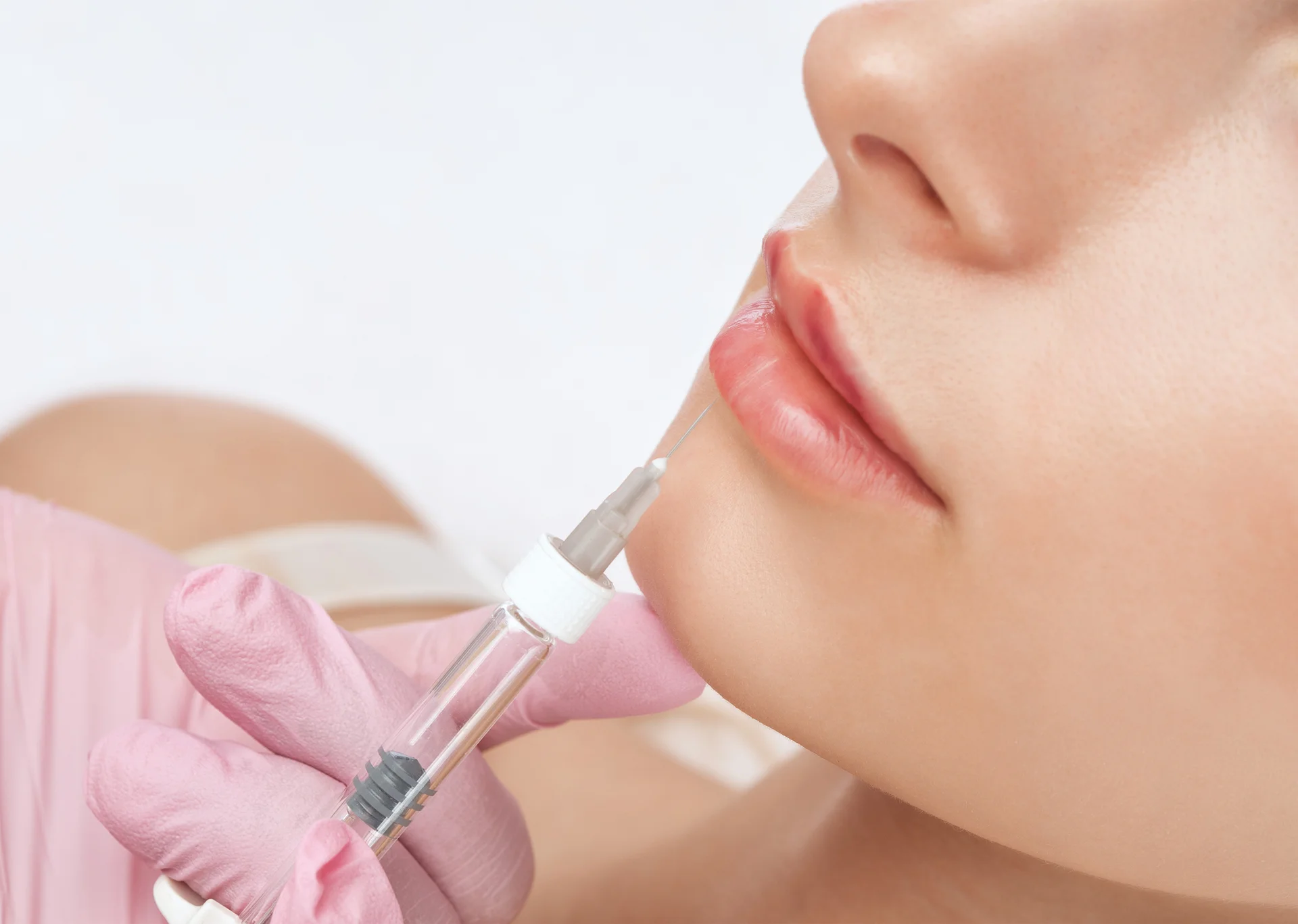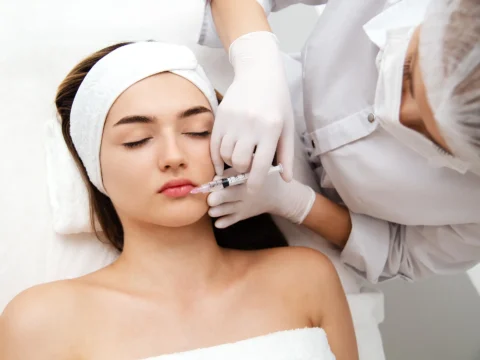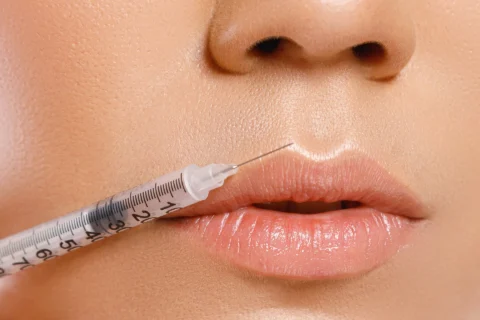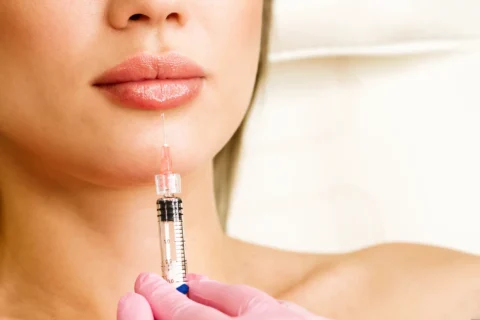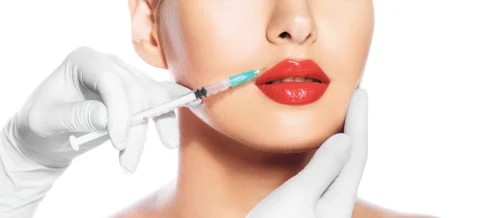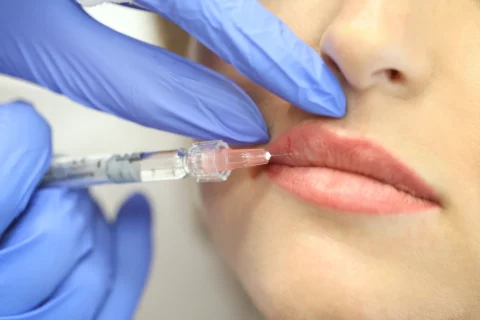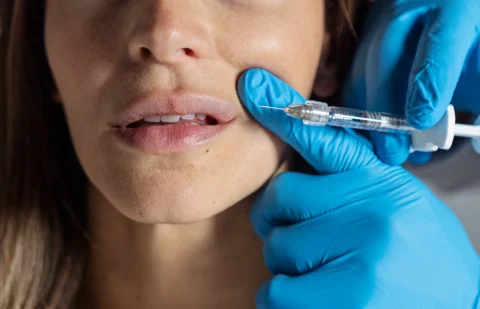A Detailed Look at Lip Filler Procedures, Uses, and Safety Concerns
Lip fillers are becoming increasingly popular as a minimally invasive method for lip augmentation. But how safe are they, and what do you need to know before getting them?
Explore the critical aspects of lip filler safety with insights from Dr. Hardik Soni of Ethos Aesthetics + Wellness. Know the risks, benefits, and proper procedures; this discussion is essential for anyone considering lip augmentation.
What Are Lip Fillers?
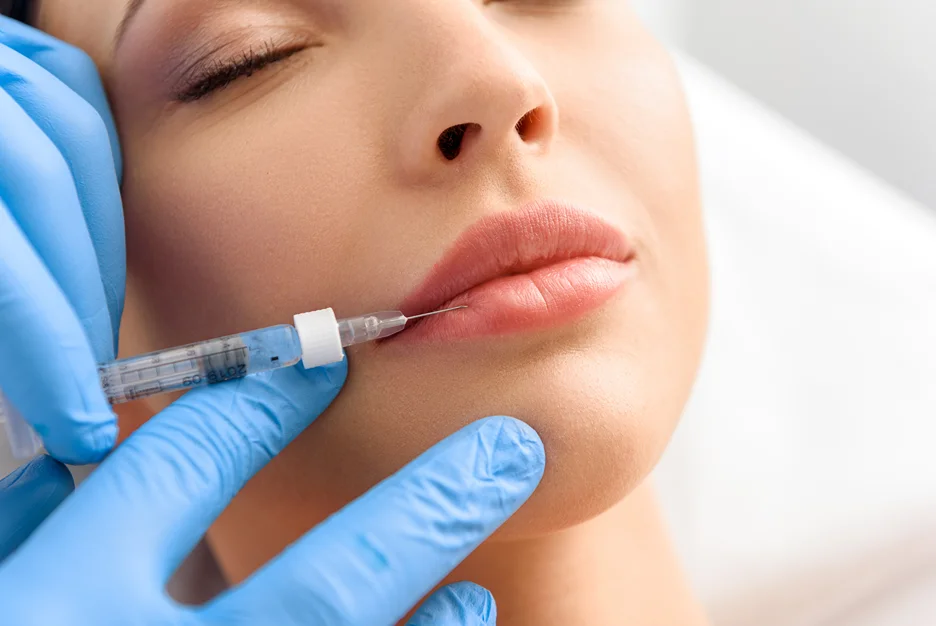
Lip fillers add fullness and volume to the lips. They are soft tissue fillers used in cosmetic procedures like “lip injections” or “lip augmentation.” Hyaluronic acid (HA) fillers are the most common today, integrating naturally into the lips. Other types include collagen fillers and autologous fat transfer. HA fillers are preferred for their safety and effectiveness.
What Are the Benefits of Lip Fillers?
Lip fillers serve both functional and cosmetic purposes. The primary uses and benefits include:
- Increasing lip volume and fullness for a plumper, more youthful appearance
- Smoothing out vertical lip lines and wrinkles around the mouth
- Improving facial symmetry by balancing uneven or asymmetric lips
- Enhancing the shape of the lips, such as accentuating the cupid’s bow
- Providing structure and definition to aging or deflated lips
- Boosting confidence and self-esteem related to lips’ appearance
Lip fillers offer an effective means to improve the look of one’s lips with minimal downtime. The effects are also temporary, meaning you can adjust the size if desired.
How is the Lip Filler Procedure Performed?
The procedure for injecting lip fillers is minimally invasive and relatively quick. Here is an overview of the step-by-step process:
- Preparation: Avoid blood-thinning medications like aspirin and consider Arnica supplements to reduce bruising risks.
- Anesthesia: Application of a topical numbing cream or nerve block injections to minimize discomfort.
- Filler Injection: Strategic injections of filler using a fine needle into the lips and around the vermillion border to enhance shape and volume.
- Molding: Gentle massaging of the lips post-injection to ensure even distribution and natural-looking results.
- Touch-ups: Additional injections as needed for optimal symmetry and fullness.
The procedure typically lasts between 15 to 60 minutes, and results are immediately visible.
Are Lip Fillers FDA Approved?
FDA Status and Safety Profile of Lip Fillers
Understanding the regulatory status and safety profiles of lip fillers can help you make an informed choice. Here are some key facts:
- FDA Approval: The FDA has approved specific hyaluronic acid (HA) fillers for lip augmentation in adults over the age of 22. One notable example is Revanesse® Lips+, designed for submucosal implantation for lip augmentation.
- Safety and Effectiveness: A 2021 study in the Journal of Drugs in Dermatology highlighted that HA fillers are generally well-tolerated and effective for enhancing lip fullness. They help maintain the naturalness and youthfulness of facial expressions and smooth the texture of the lips. The study noted that most adverse events were mild, with no serious incidents reported.
- Meta-Analysis Findings: A comprehensive meta-analysis in Frontiers in Surgery (2021) revealed that about 91% of subjects showed increased lip fullness two months post-injection. This rate decreased to 74% at six months and 46% at 12 months. Common adverse events included tenderness, swelling at the injection site, and bruising. Rare complications included foreign body granulomas, herpes labialis, and angioedema.
- Potential Risks: While HA fillers are generally safe, incorrect administration can lead to significant risks. For instance, accidental arterial injection can lead to severe complications, including blindness or stroke.
- Fat Transfers: Using one’s own body fat can be an option but provides less predictable results compared to HA fillers, which remain the gold standard.
Potential Side Effects and Complications
While generally safe, like any procedure, lip injections do come with some risks and potential side effects to consider:
Common, Temporary Side Effects
- Swelling, redness, bruising at injection sites
- Tenderness and soreness
- Unevenness, bumps, or lumpiness
- Cold sores reactivation (for those prone to them)
These resolve within a few days to a couple weeks as the lips heal after injections.
Rare Side Effects
- Allergic reaction to the filler substance
- Acne breakouts due to skin irritation
- Asymmetry or unnatural feel or look of the lips
- Granuloma formation – benign inflammatory nodules
- Filler migration resulting in puffy lip borders
- Damage to lip muscle affecting motion
Serious but Very Rare Risks
- Vascular occlusion – blockage of a blood vessel that can lead to tissue death
- Infection
- Excessive scarring
Seeking properly trained and certified providers like Dr. Soni minimizes such serious risks along with proper post-procedure care. Most side effects can also be addressed with follow-up treatments and touch-ups.
Factors That Influence the Safety of Lip Fillers
The skill and experience of the provider along with the individual characteristics of the patient play a big role in the safety and effectiveness of lip fillers.
Provider Factors
- Board-certified plastic surgeons and dermatologists generally offer the highest level of training and skill.
- Seek licensed, experienced injectors who specialize in lip augmentation.
- An artistic eye along with a robust understanding of facial anatomy improves safety.
- Reputable providers use high-quality, FDA-approved fillers.
Patient Factors
- Overall health status – Issues like bleeding disorders make procedures riskier
- Anatomical anomalies like thin lip tissue increase bruising and swelling
- Smoking and alcohol use negatively impact healing and increase risks
- History of cold sores or outbreaks requires preventive antiviral medicine
- Realistic expectations – Overly aggressive procedures disproportionate to one’s lips can compromise safety and aesthetics
Selecting the right provider and maintaining proper pre- and post-procedure protocols promotes the safest lip filler experience.
Regulations and Standards for Administration
The regulation of dermal fillers and who can administer them varies between countries, though standards are tightening.
- U.S. Regulation: The FDA regulates dermal fillers as Class III devices, requiring Premarket Approval (PMA) to ensure safety and effectiveness.
- Administration Guidelines: The FDA advises that trained healthcare providers should perform filler injections due to potential risks of improper administration.
- Manufacturing and Testing: Strict FDA standards govern the manufacturing and testing of approved fillers to confirm their safety and efficacy.
- Adverse Event Monitoring: The FDA monitors medical device reports for dermal fillers to track and address safety concerns, although mandatory reporting by injectors isn’t required.
While injectables remain lightly regulated compared to many medical treatments, reputable providers adhere to rigorous standards and protocols to maximize patient safety and natural-looking outcomes.
Alternatives to Lip Fillers
While lip fillers offer an accessible and minimally invasive option, other options exist for those seeking lip enhancement or who are cautious about fillers.
- Makeup Contouring: Techniques like overlining and contouring can create the illusion of fuller lips. This method is risk-free compared to fillers but offers only temporary results until the makeup is removed.
- Platelet-Rich Plasma (PRP): PRP therapy involves injecting a concentration of the patient’s own platelets to stimulate collagen production in the lips. It’s considered a more natural approach, though it requires multiple sessions and lacks extensive safety data.
- Lip Lifts and Implants: Surgical options like lip lifts or permanent implants offer lasting enhancement but come with higher risks, such as scarring, and require recovery time.
- Lip Pumping Devices: These devices temporarily swell the lips by increasing blood flow. With repeated use, they can gradually stretch lip tissue, but overuse may lead to ruptured blood vessels and permanent discoloration.
Conclusion
Lip fillers are generally safe, but patients should be informed about serious risks. Properly injected HA fillers pose a low risk and can be transformative when administered by a trained professional. Moderation is crucial for both aesthetics and safety.
Avoid unlicensed or inexperienced providers and choose specialists who understand facial anatomy. Careful patient selection and choosing a competent provider can lead to satisfying and safe results.
FAQs on the Safety of Lip Fillers
Are Lip Fillers Safe?
Lip fillers, particularly those based on hyaluronic acid, are generally considered safe when administered by a qualified professional. However, like any cosmetic procedure, they carry risks such as allergic reactions, infection, and asymmetry.
What is the Safest Lip Filler Technique?
The safest technique involves using FDA-approved hyaluronic acid fillers administered by a qualified and experienced professional. Precise injection methods and adherence to safety protocols are crucial.
Who Should Avoid Lip Fillers?
Individuals with allergies to filler ingredients, those with certain autoimmune diseases, pregnant or breastfeeding women, and those with active skin infections near the injection site should avoid lip fillers.
How Long Do Lip Fillers Last?
The effects of lip fillers typically last between 6 to 12 months, depending on the type of filler used and the individual’s metabolism.
Can You Dissolve Lip Fillers?
Yes, hyaluronic acid-based fillers can be dissolved using an enzyme called hyaluronidase. This process is relatively safe when performed by a trained professional.
Is Dissolving Lip Filler Safe?
Yes, dissolving lip fillers, specifically hyaluronic acid-based ones, is generally safe when performed by a trained professional using hyaluronidase. It’s an effective method to reverse unwanted filler effects.
Are Lip Fillers Painful?
Discomfort is usually minimal due to the use of numbing creams or injections. Some people may experience mild pain during and after the procedure.
Can You Fly After Getting Lip Fillers?
It’s generally advised to wait at least 24-48 hours after getting lip fillers before flying to reduce the risk of increased swelling and bruising.
What Should You Not Do After Getting Lip Fillers?
Avoid strenuous exercise, alcohol, and extreme heat for at least 24 hours post-procedure to reduce swelling and bruising.
Are Lip Fillers Safe During Pregnancy?
Lip fillers are not recommended during pregnancy due to the lack of research on the effects on the fetus.
Are Dermal Fillers Safe for People with Autoimmune Diseases?
Caution is advised. Individuals with autoimmune diseases should consult with their healthcare provider before getting dermal fillers, as there may be an increased risk of complications.
Are Lip Fillers Safe in the Long Term?
When administered properly, lip fillers have a good safety profile for long-term use. However, long-term effects can vary, and regular follow-up treatments are necessary to maintain results.
Is it Safe to Get Lip Fillers While Breastfeeding?
The safety of lip fillers during breastfeeding is not well-established. It’s generally recommended to avoid cosmetic injections while breastfeeding to prevent any potential risks to the baby.
Enhance Your Smile with Confidence: Discover Safe Lip Fillers with Dr. Soni
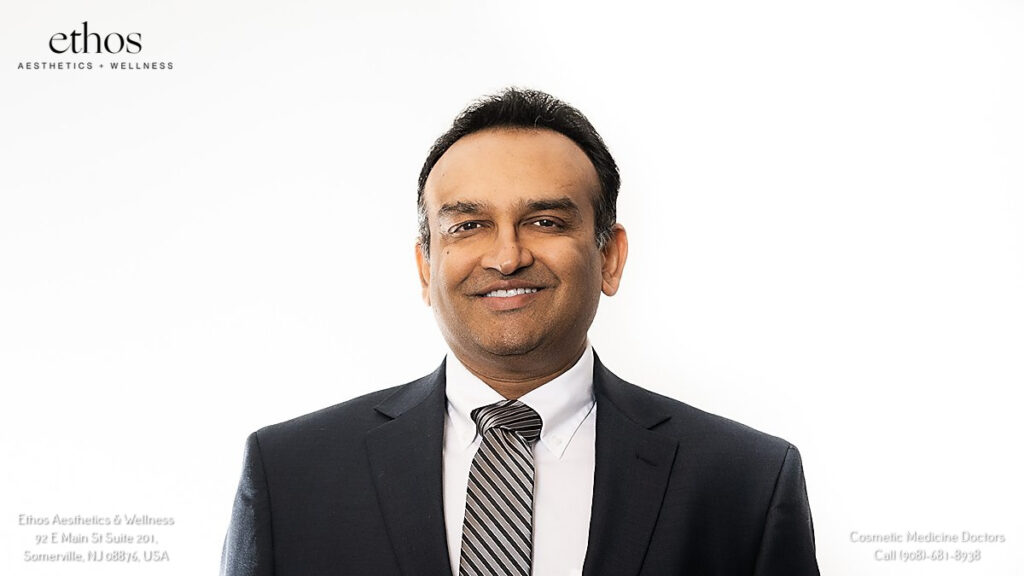
Interested in safe and effective lip fillers? Visit Dr. Soni at Ethos Aesthetics + Wellness. With a wide range of FDA-approved options, we ensure personalized care tailored to your needs. Book your consultation today for a beautiful, confident smile!

